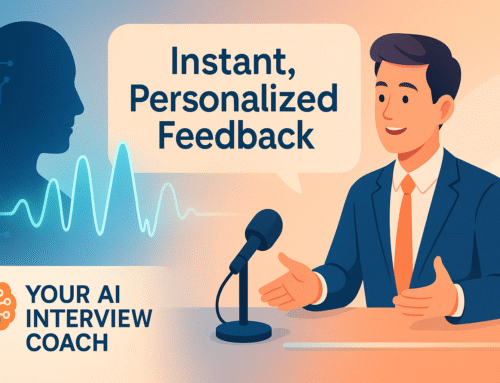Everyone in the education industry focuses mostly on unique teaching techniques and student performance. However, many don’t consider the importance of an HR department in schools and colleges.
Ideally, the HR professionals in any educational institution are responsible for hiring quality staff, which affects the management and administrative functions. They also maintain employee information, manage payroll, ensure attendance documentation, etc.
Hence, the HR team at educational institutions is under continuous pressure to perform difficult or tedious tasks and meet expectations. That’s why they can face challenges like the inability to find the right talent, improper communication between staff members, and endless manual work.
In this blog, we will discuss these challenges in detail and find solutions for each shortcoming.
Image by Freepik
1. Inability to Hire Qualified Educators
In America, approximately 86% of public schools struggle to hire teachers. One of the reasons for this shortage is the low salary offered. Hence, various schools feel understaffed and blame HR for not doing their jobs correctly.
But it’s not their fault. After the pandemic, HR in the education sector did find it hard to recruit a diverse pool of candidates suitable for the job roles. That’s because modernization, high competition, and evolving trends have affected talent acquisition a lot. Yes, they aren’t equipped to handle the continuous changes in scenarios when it comes to recruiting teachers.
HR challenges also stem from the lack of skills or shortcomings of educators. Examples include a lack of autonomy, poor communication skills, bad working ethics, etc. Hence, it’s hard for the HR department to find proficient and qualified educators.
Can This Be Solved?
HR teams should plan for teacher participation and collaboration to make future decision-making smoother. Getting insights through professional collaboration and shared decision-making can help them understand teachers’ needs and promote inclusiveness.
To get the desired candidates, administrators can also invest in a recruitment management system. This tool can help simplify the shortlisting, hiring, and onboarding processes. Overall, such software automates the hiring process to make it faster, more structured, and more effective. Hence, qualified educators will be attracted to the easy hiring process.
Most importantly, HR professionals should offer competitive salaries, create a supportive work culture, and offer benefits. They should also design good recruitment materials, attend job fairs, ask for referrals, etc. All of these will help them attract qualified educators.
2. Communication Barriers
Reports suggest that communication is the cornerstone of a successful educational institution. However, there’s a possibility of misinformation, gossip, and misunderstanding if educators fail to communicate with each other. Administrators and teachers are sometimes unable to speak their minds. Hence, it reduces the feeling of inclusiveness among education leaders and educators.
If that happens, the HR department is responsible for resolving the disagreements. They will organize regular meetings until the conflict is resolved and all the employees are satisfied. But in doing so, they are failing to meet deadlines and handle other crucial administrative tasks.
Let’s say the institution has multiple buildings and employs hundreds of educators. Then, it’ll be hard for the professors and education leaders to communicate daily. Moreover, they cannot always rely on word-of-mouth for clear communication. What’s the solution for this?
The Solution
Change in any institution comes from the leader’s ability to organize and manage expectations. Good education leaders can increase communication and productivity while making the organization stronger.
Hence, HR professionals should hire a qualified leader who has gone down the correct career path for leading an educational institution. Candidates with a Master’s in Education Leadership degree can create positive cultures focusing on the importance of communication. Moreover, they’ll know about managing finances, education law, and developing curriculum. They can easily lead teachers and students while focusing on proper communication to streamline the education system of any school or college.
Other than that, HR can consolidate communication effectively by investing in an employee engagement platform. Education leaders and teachers can use an internal communication system to mitigate and prevent any gaps. They can also discuss new teaching ideas, brainstorm solutions, and more.
3. Endless Manual Administration
HR professionals in every industry have to work on some manual administration tasks. Reports suggest that manual HR processes can cost up to USD 4.78 for each task. Examples include maintaining Excel sheets, data entry, manually solving grievances, etc.
However, the education industry takes the throne for manual HR work. These institutions demand repetitive, time-consuming manual processes and paperwork from the HR department. For instance, they must keep track of the payroll, transportation, attendance, admissions, etc.
Other than the HR team, teachers also have a lot of redundant manual work. For example, they sometimes have to repeat the same student data entry task every year. If not addressed, these can lead to productivity issues and affect the quality of work. There’s also an increased possibility of human error in manual or repetitive tasks.
Ways to Mitigate This Issue
The only solution to mitigate manual administration is introducing task-based digital tools in the institution. Digitization can transform the educational infrastructure, assist with management duties, and give institutions a competitive edge.
Therefore, digital processes can automate various administration tasks and save time on other important matters. Examples include providing proper education, hiring suitable talent, supporting professional development, etc. HR professionals can easily automate time-consuming activities like data entry, form submissions, getting signatures, etc.
A digital system can improve time management and help everyone meet contract deadlines. With it, HR can set reminders and alerts for any changes in administration. It also reduces the workload on educators and enhances accuracy.
Conclusion
The education industry must pay close attention to and understand the importance of HR management. HR needs to ensure teacher and student satisfaction by providing opportunities for growth and a positive work environment.
However, any educational institution won’t grow or function properly without HR administration. That’s why they need to invest in the correct digital solutions and make changes in administration to help overcome any shortcomings.







Leave A Comment